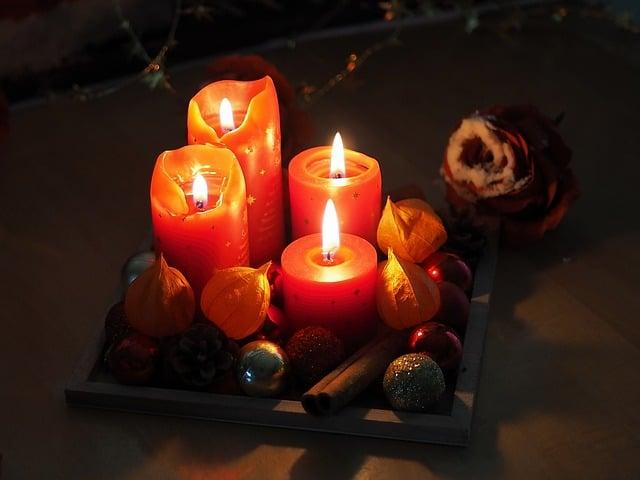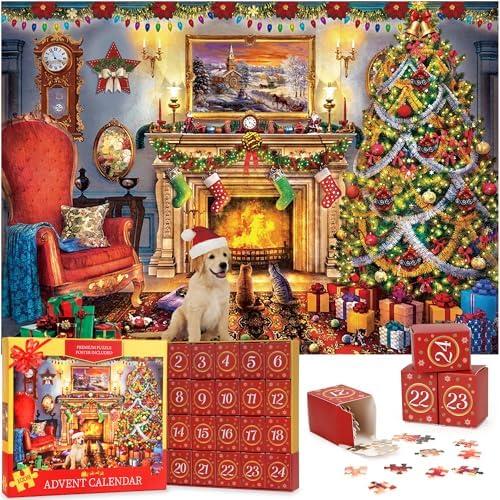As the last leaves of autumn fell, a small village prepared for the first whispers of winter. In the heart of the village, a church bell tolled, signaling the start of Advent. The townsfolk gathered, lighting candles that flickered like stars against the encroaching darkness. They understood that this season marked not just the countdown to Christmas, but a time of hopeful anticipation. Advent, the beginning of the Catholic year, invited them to reflect, renew, and prepare their hearts for the light that would soon break through the night.
Table of Contents
- Understanding the Liturgical Calendar and Its Significance
- The Role of Advent in Preparing for Christmas
- Historical Context: The Evolution of the Catholic Year
- Embracing the Spirit of Advent: Practices and Reflections
- Q&A

Understanding the Liturgical Calendar and Its Significance
The liturgical calendar serves as a spiritual roadmap for the Catholic faithful, guiding them through the rhythms of the Church year. It is divided into distinct seasons, each with its own themes, colors, and celebrations that reflect the life of Christ and the journey of faith. Starting the year with Advent, a season of anticipation and preparation, emphasizes the importance of waiting and longing for the coming of Christ. This period invites believers to reflect on their spiritual lives, fostering a sense of hope and renewal as they prepare for the joyous celebration of Christmas.
Advent marks not only the beginning of the liturgical year but also sets the tone for the subsequent seasons. It encourages a deeper understanding of the significance of the Incarnation and the promise of salvation. The transition from the reflective nature of Advent to the celebratory spirit of Christmas highlights the journey from darkness to light, symbolizing the transformative power of faith. Key elements of this season include:
- Prayer and Reflection: Engaging in personal and communal prayer to deepen one’s relationship with God.
- Advent Wreath: A visual reminder of the weeks leading up to Christmas, with candles representing hope, peace, joy, and love.
- Scripture Readings: Focusing on prophetic texts that foretell the coming of Christ, enriching the understanding of His mission.

The Role of Advent in Preparing for Christmas
Advent serves as a sacred time of reflection and anticipation, marking the beginning of the liturgical year in the Catholic tradition. This season invites the faithful to prepare their hearts and minds for the celebration of Christ’s birth. It is a period characterized by **hope**, **joy**, and **spiritual renewal**, encouraging individuals to engage in practices that deepen their faith. As the world outside becomes increasingly busy with holiday preparations, Advent calls for a pause, allowing believers to focus on the true meaning of Christmas. Through prayer, meditation, and acts of kindness, the faithful are reminded of the light that Jesus brings into the world.
During Advent, the use of the Advent wreath and calendar serves as tangible symbols of this preparation. The four candles of the wreath, lit progressively each week, represent **hope**, **peace**, **joy**, and **love**. Each candle’s flame signifies the growing light of Christ in the darkness of winter, illuminating the path toward His coming. Additionally, the practice of daily reflections or readings helps to cultivate a spirit of expectation and gratitude. By embracing these traditions, Catholics not only prepare for the joyous celebration of Christmas but also embark on a journey of spiritual growth, fostering a deeper connection with their faith and community.

Historical Context: The Evolution of the Catholic Year
The Catholic liturgical calendar has undergone significant transformations since its inception, reflecting the Church’s evolving understanding of time and spirituality. Initially, the early Christians celebrated the resurrection of Christ, which became the focal point of their worship. Over the centuries, various feasts and seasons were introduced, culminating in the establishment of a structured calendar that includes significant events such as Christmas and Easter. The Church recognized the need for a rhythm to the year, allowing the faithful to journey through the life of Christ and the mysteries of faith. This led to the creation of distinct liturgical seasons, each with its own themes and observances.
Advent, marking the beginning of the Catholic year, serves as a period of preparation and anticipation for the celebration of Christ’s birth. This season emphasizes **hope**, **joy**, and **reflection**, inviting the faithful to engage in a spiritual journey that culminates in Christmas. The choice of Advent as the starting point is significant, as it aligns with the Church’s desire to prepare hearts and minds for the coming of the Savior. The liturgical year, therefore, is not merely a chronological sequence but a profound narrative that guides believers through the mysteries of faith, encouraging them to live out the teachings of Christ throughout the year.

Embracing the Spirit of Advent: Practices and Reflections
As the season of Advent approaches, it invites us to pause and reflect on the deeper meanings of hope, preparation, and anticipation. This sacred time is not merely a countdown to Christmas; it is a profound journey that encourages us to cultivate a spirit of waiting and longing for the coming of Christ. Embracing this spirit can be enriched through various practices that help us connect with the essence of the season. Consider incorporating the following into your Advent routine:
- Daily Prayer: Set aside time each day for quiet reflection and prayer, focusing on themes of hope and renewal.
- Advent Wreath: Light a candle each week, symbolizing the growing light of Christ in our lives.
- Acts of Kindness: Engage in charitable acts or service projects, embodying the love and generosity of the season.
- Scripture Reading: Delve into the readings of the season, allowing the words to inspire and guide your thoughts.
In addition to these practices, Advent also calls for a deeper introspection about our spiritual lives. It is a time to examine our hearts and consider how we can prepare ourselves for the coming of Christ, not just in December but throughout the year. Reflecting on our personal journeys can lead to transformative insights. Here are some ways to deepen your reflections during this sacred time:
- Journaling: Write down your thoughts and feelings about the season, exploring what it means to you personally.
- Silence and Solitude: Carve out moments of silence to listen for God’s voice amidst the busyness of life.
- Community Engagement: Share your reflections with others, fostering a sense of community and shared anticipation.
- Mindful Living: Practice being present in each moment, recognizing the beauty and grace that surrounds you.
Q&A
-
What is Advent?
Advent is the season of preparation for the celebration of the birth of Jesus at Christmas. It typically lasts for four weeks, beginning on the fourth Sunday before Christmas and ending on Christmas Eve.
-
Why does the Catholic Church start the year with Advent?
The Catholic liturgical year begins with Advent to emphasize the themes of hope, anticipation, and preparation. It sets the tone for the entire year, focusing on the coming of Christ, both in the past at Christmas and in the future at the Second Coming.
-
How does Advent relate to the rest of the liturgical year?
Advent serves as a gateway to the Christmas season, which is followed by Ordinary Time, Lent, and Easter. Each season has its own themes and focuses, but Advent’s emphasis on waiting and preparation is foundational for understanding the significance of the events that follow.
-
Are there specific traditions associated with Advent?
Yes, many traditions are associated with Advent, including the use of Advent wreaths, calendars, and special prayers. These practices help the faithful to reflect on the meaning of the season and to prepare their hearts for the celebration of Christmas.
As we embrace the season of Advent, we find ourselves at the threshold of renewal and reflection. This unique beginning invites us to prepare our hearts for the joy of Christmas, reminding us that every ending is but a new beginning in the sacred rhythm of faith.

大家好,我是彼得潘,專業的手法身體治療師。我喜歡探索和研究各種主題,並透過與人工智慧的合作分享專業、實用、有趣的文章。我們定期進行人工審核,以確保內容的準確性。如果您發現文章中有任何不準確的地方,請隨時與我們聯繫,我們會及時糾正。您可以透過 [email protected] 與我們聯繫。



